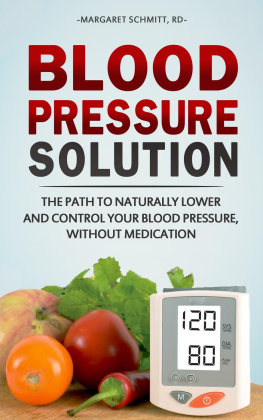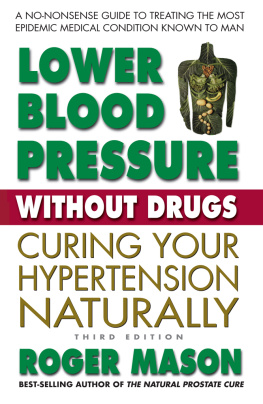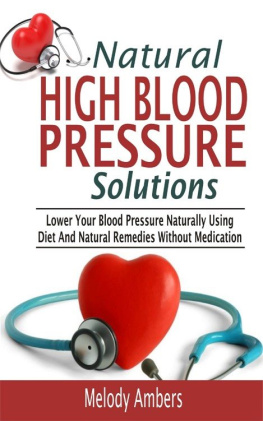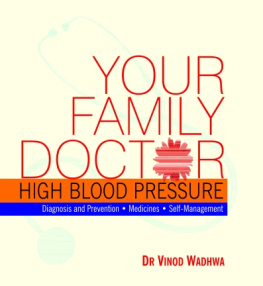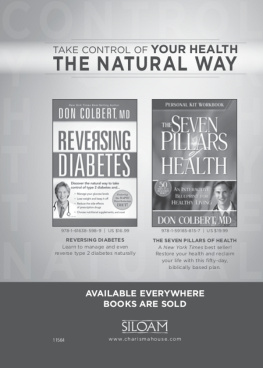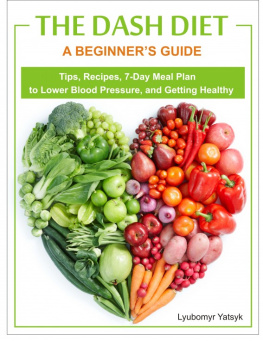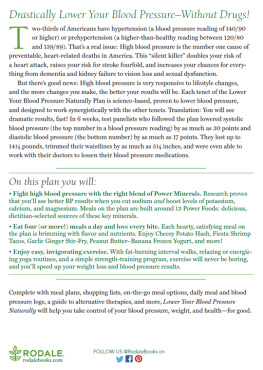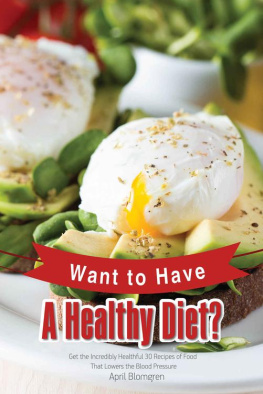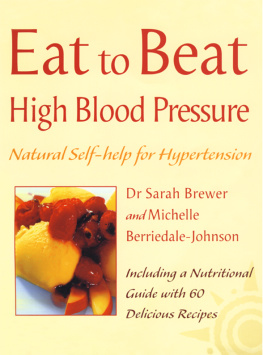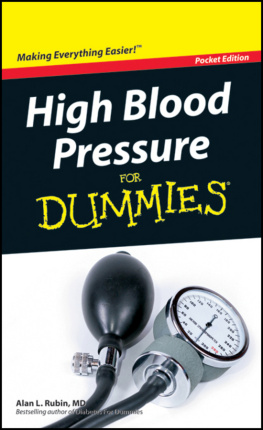What Hypertension is,
Causes of High Blood Pressure Symptoms and Fast Remedies
By Rebecca Park Totilo
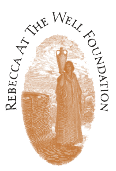
How to Lower Blood Pressure Naturally with Essential Oil
Copyright 2014 by Rebecca Park Totilo
All rights reserved. No part of this book may be reproduced or transmitted in any form or by any means without written permission of the author.
Printed in the United States of America.
Published by Rebecca at the Well Foundation, PO Box 60044, St. Petersburg, Florida 33784.
No part of this publication may be reproduced, stored in a retrieval system or transmitted in any form by any meanselectronic, mechanical, photocopy, recording or otherwisewithout written permission of the copyright holder, except as provided by USA copyright law.
Disclaimer Notice: The information contained in this book is intended for educational purposes only and is not meant to substitute for medical care or prescribe treatment for any specific health condition. Please see a qualified health care provider for medical treatment. We assume no responsibility or liability for any person or group for any loss, damage or injury resulting from the use or misuse of any information in this book. No express or implied guarantee is given regarding the effects of using any of the products described herein.
ISBN 978-0-9898280-1-7
What is High Blood Pressure?
Bump bump. Bump bump. Each time your heart beats, it is pumping blood into the arteries. Blood pressure is the force of the blood pushing against the walls of your arteries. Hypertension is another term used to describe high blood pressure.
Blood pressure readings are given in two numbers such as 120/80 mmHg. Your blood pressure is the highest when your heart beats, pumping the blood (in this example 120). This is called systolic pressure. When your heart is at rest, between beats, your blood pressure drops (in this example 80). This is called diastolic pressure. One or both of these numbers can be too high.
When your blood pressure is taken, a reading will use the systolic number first (the top number) and the diastolic number second (the bottom number).
Blood Pressure Reading:
- 119/79 or lower is normal blood pressure
- 140/90 or higher is high blood pressure
- Between 120 and 139 for the top number, or between 80 and 89 for the bottom number is called prehypertension
Prehypertension is an indication that you could end up with high blood pressure, unless steps are taken to prevent it. And, since high blood pressure has no symptoms, you will need to continually monitor it so that you do not end up with serious problems such as stroke, heart failure, heart attack and/or kidney failure. Individuals with prehypertension can also benefit from using essential oils to control their blood pressure along with healthy lifestyle habits.
Normal blood pressure is when your blood pressure is lower than 120/80 mmHg most of the time. High blood pressure is when your blood pressure is 140/90 mmHg or above most of the time. Prehypertension is when your blood pressure numbers are 120/80 or higher, but below 140/90. Depending on your health condition, your doctor may want to see your numbers lower, based on your current health condition.
What Causes High Blood Pressure?
There are several factors that can affect your blood pressure including:
- The amount of water and salt in your body
- The condition of your kidneys, nervous system, and blood vessels
- Your hormone levels
As people get older, it is possible to see an increase in blood pressure due to the vessels becoming stiffer with age. Other individuals who are at risk of high blood pressure include:
- African Americans
- Overweight and obese people
- Individuals who are often stressed or anxious
- Individuals who drink too much alcohol
- Individuals with a family history of high blood pressure
- Smokers
- Individuals with diabetes
- Individuals on high sodium diet
In some cases, high blood pressure is caused by another medical condition or medication. This is called secondary hypertension and may be caused by:
- Chronic kidney disease
- Disorders of the adrenal gland (such as Cushing syndrome or pheochromocytoma)
- Hyperparathyroidism
- Pregnancy or preeclampsia
- Medications (such as diet pills, birth control pills, cold medicines, migraine medications)
- Narrowed artery that supplies blood to the kidney (such as renal artery stenosis)
Symptoms of High Blood Pressure
As stated earlier, most of the time people are unaware that they have high blood pressure because there are no visible symptoms. Usually, most people find out about their condition when they visit the doctor for another reason or have it checked elsewhere.
Undetected high blood pressure can result in damage to the heart or kidney problems. However, if you do suffer from severe headaches, nausea, vomiting, changes in vision, or nosebleeds, you may have a dangerous form of high blood pressure called malignant hypertension.
Other symptoms that may occur include: persistent morning headaches, dizziness, raised blood pressure (normal is about 120/80 systole/diastole), sweating, rapid pulse, shortness of breath, swollen ankles, or elevated cholesterol. You will want to see your doctor right away to be checked.
Getting Checked for High Blood Pressure
All adults should have their blood pressure checked annually if their blood pressure was less than 120/80 mmHg at their last reading. If you have high blood pressure, diabetes, kidney problems, or another health condition, you will want to have your high blood pressure checked more often. Your health care provider will measure your blood pressure several times before diagnosing you with high blood pressure. It is normal for your blood pressure to vary at different times a day. Readings performed at home with proper equipment will give you a more accurate reading of your current blood pressure than one taken at a grocery store, a fire station or doctors office.
Blood Pressure Monitoring
You will need to purchase a good quality well-fitting home device to keep track of your blood pressure at home. A device can be purchased at a local pharmacy or online. Make sure it has one adjustable cuff for your arm and a digital readout. Practice with your health care provider to make sure you are taking your blood pressure properly to ensure you are getting accurate readings.
If you try taking your blood pressure throughout the day, you will notice that your pressure is usually higher while on the job, then drops when you are home. While sleeping, your blood pressure is usually the lowest. It is normal for your blood pressure to increase suddenly when you wake up. This is why people with high blood pressure are at risk for a heart attack or stroke in the early morning.
Follow Up
You will want to monitor your blood pressure at home daily and keep a written record, along with any changes you make to your lifestyle, diet modifications and any essential oil regimens you incorporate into your daily routine. This is especially important to do once you have been diagnosed with high blood pressure by your doctor at a physical exam. Bring this information along with results to your next clinic visit. This will help the physician know what adjustments need to be made to your medications, if any have been prescribed.
Be sure to keep track of:





